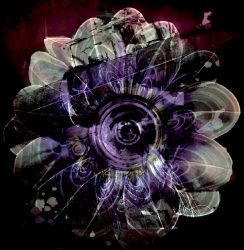In december 2010, dutch composer Mendel Kaelen surprised me with his impressive electro-acoustic music on “Remembering What Was Forgotten”.
His new album (his second full-length) “The Tragedy That Drowned Itself” is the debut release of a new UK/NL record label called Sineszi, aiming to publish contemporary electro-acoustic music and sound art.
And quite a promising start that is!
This beautifully coloured digipack release (also available as a fairly priced digital download only) reveals intriguing sounds that are very enigmatic – especially since there’s no mentioning of their origin in the liner notes of the album itself.
To call “The Tragedy That Drowned Itself” a ‘drone’ release would not do it justice. There are drones, indeed, but they’re fragmented and serve as background colouring for other sounds (as drones originally should).
But it’s not far from the truth, either, because all of these sounds originate from an old indian harmonium, the kind of instrument that was made especially to create drones.
Mendel Kaelen found this instrument, covered in dust, in an old basement and its sounds inspired him. Not just the musical sounds, but also the (mostly somewhat hidden) sounds of the instrument mechanism at work.
“Instead of focusing on the usual drones that the instrument produced, the recordings explicitly zoomed in on the cranky wooden panels, the squeaking metal pins, and the airwaves escaping from the dilapidated bellows. Background sounds that would normally be ignored as mechanical inconsistencies are here enlarged and play a prominent role on each track of the album.”
In recent years, some artists started to include the sounds of their acoustic instrument in the recording process, instead of trying to conceal them (artists like Peter Broderick, Nils Frahm, Goldmund come to mind, although most of their music is not quite comparable to that on this release).
Mendel Kaelen takes this idea a large step further, focussing on the crackling, breathing and moaning sounds like watching it through a microscope.
The result is that the harmonium almosts sounds like a living being, working hard to produce the desired sounds, the sounds it was created for. And it’s clear that succeeding in just that is not always an easy task for an instrument as old like this one.
With this music, Mendel Kaelen merges deep listening sounds with found sound/field recordings and musique concrête.
If you’re looking for comparisions, I guess there are hardly any.
But if you insist, I’d say that there’s a fair amount of Pauline Oliveiros meeting Chris Watson and then adding some John Cage in the process…
MENDEL KAELEN – THE STREAM



